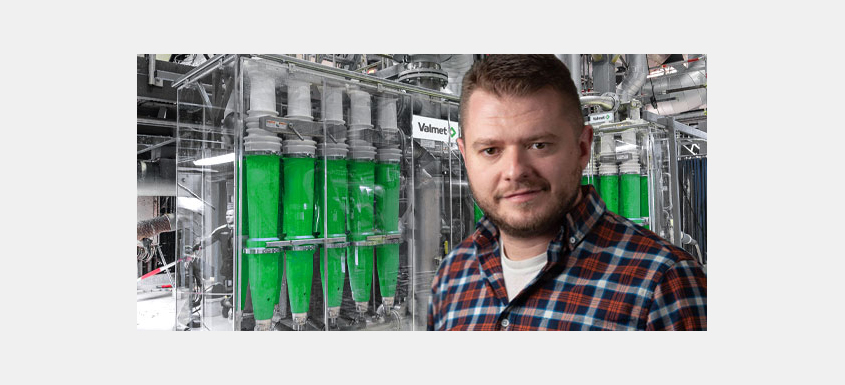Hydrocyclone systems remove unwanted particles such as sand, glass, metal, plastic and polystyrene from pulp.
These systems can be put into practice in many different arrangements based upon the goals and layout of the mill application. As a result, there are many variables that can impact the runnability of a pulp cleaner system.
When working with mill personnel to optimize hydrocyclone performance, Valmet cleaner experts often turn to common factors that impact cleaner control and operating parameters. Chris Koterba, Product Manager, Hydrocyclones, North America, a presenter at a recent Valmet webinar, provided insight into five such factors:
1. Operating pressures
A Pressure Drop, the drop in pressure between the feed and accept headers, determines the cleaner flow capacity, and can impact removal efficiency. An increase in pressure drop can impact hydrocyclone efficiency because it:
- Decreases feed consistency
- Increases particle inlet velocity
- Increases centrifugal force
- Decreases residence time
Consequently, the Pressure Drop depends upon the type of cleaner used in an application. Generally, hydrocyclones operated at a high Pressure Drop have a better cleaning efficiency than those operated with a lower Pressure Drop; however, excessively high Pressure Drops will result in a drop off in efficiency, as the effect of decreased residence time becomes greater than the effect of the increase in centrifugal force.
The pressure differential (dp), the difference in pressure between the accept and reject headers, determines the volumetric reject rate, which can impact removal efficiency and runnability. Excessively low volumetric rejects can lead to plugging and insufficient contaminant removal, while excessively high volumetric rejects can lead to turbulence and overwhelm the lower stages with fiber.
2. Reject rate
The reject rate is an important parameter for determining cleaning efficiency. If the reject rate is too low, the cleaning efficiency will be unacceptably low. By contrast, if it is too high, the late stages of the cleaner system will require more cleaner bodies and possibly additional cleaning stages.
Reject rate can be expressed in terms of volume or weight, however only the reject rate by volume can be controlled by pressure settings. Increasing the pressure differential increases the volumetric reject rate of the cleaner and vice versa. The reject rate by volume is the percent of feed volume rejected by the cleaner, and is calculated by dividing the reject volume by the feed volume. Opening a cleaner’s reject valve or closing its accept valve increases the reject rate by volume, and thus increases the pressure differential.
3. Stock freeness
Higher freeness pulp will result in increased thickening of rejects, causing a higher reject rate by weight. Higher weight reject rates require a higher quantity of lower-stage cleaner units to maintain the desired inlet consistencies for the cleaning application.
4. Thickening factor
The thickening factor is an important measure for optimizing cleaner performance as it relates to runnability, and more specifically, plugging. Understanding the thickening factor helps to understand how much fiber is being rejected. It is the ratio of reject consistency to the feed consistency (or the reject ratio by weight divided by the reject rate by volume). Thickening factor is set by the design of a particular cleaner and is impacted by a number of variables, including fiber properties, type of contaminants, pulp temperature, freeness and more.
5. Controlled turbulence
Rejects form a mat along the wall of a cleaner. This fiber mat thickens as it moves down the hydrocyclone, causing acceptable material to get caught. To encourage a greater accept tonnage and lower the risk of plugging, efficient cleaner systems introduce controlled turbulence to the lower cone area in the form of a small pattern or set of bumps. Inducing turbulence into the flow of the cleaner often helps good material to escape the accepts stream.
Understanding basic cleaner theory and the tools used to measure efficiency can help mill teams maximize operational performance and limit downtime in the cleaner plant.
Valmet’s hydrocyclone process engineers work with mill teams every day to optimize their cleaner systems through process audits, mechanical inspections, training, and general assistance with troubleshooting.
Source: Valmet
